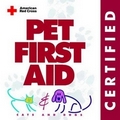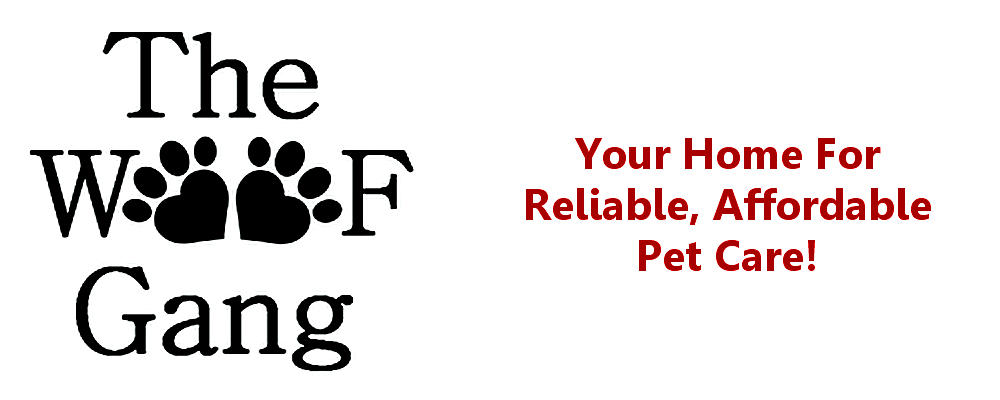Leash Training Your Dog - A Proven, Step-By-Step, Positive Reinforcement Method
Compliments of: The Woof Gang - Reliable, Affordable Pet Sitting and Dog Walking
Compliments of: The Woof Gang - Reliable, Affordable Pet Sitting and Dog Walking
Below is a very simple, step-by-step process that will ensure your dog behaves appropriately on a leash. We've had plenty of success using this method, so we're confident enough to say that, if you follow it closely, (and EVERYONE who walks your dog follows it closely!), you will achieve the desired result. Please be aware that everyone in your household (or out) who takes your dog for a leash walk must convey the same consistent message or set of rules to your dog, no exceptions!
This method relies on the theory that a dog's behavior is determined by the immediate consequences of his/her actions. When leash training, this means that your dog quickly comes to the realization that when they pull on the leash they get nowhere. If you simply stop (be a tree!), and, this continues to happen every time they pull, your dog is highly unlikely to continue to do it! They don't like the new consequences of leash pulling either! When your dog begins to understand that, by sticking close to you on a loose leash, they can stroll along happily all they want, they'll quickly get the picture!
The Leash:
The most important facet of leash walking (aside from consistency!), is THE LEASH! It is essential that the leash is always the same length, meaning: Never train with a flexible leash! Your dog must know exactly how many feet they have before they are at risk of pulling you. Then, after they have been properly taught to 'heel', leash length will be unimportant.
It's also important that the leash be easy on YOUR hands, so that, if your dog pulls, it won't hurt you. A strong, leather leash is best. We also suggest that, unless your dog pulls very hard, you use a regular buckle collar or a martingale collar. A well leash trained dog should be very easily walked on a regular collar.
Proper Leash Use:
Choose a side of your body for your dog to be on all the time. We recommend the left side, because that is where the 'heel' position is located. Put the handle of the leash over your RIGHT thumb and then grasp it in your RIGHT palm. You can make it shorter or longer as you are working simply by releasing your grip or gathering more.
With an untrained dog, we sometimes have a tendency to want to pull back on our dogs and put constant pressure on their collar, which forces them to pull back even harder! If you grab and pull someone, they pull away ... it's instinct! Don't pull on your dog! Also, make sure to make it almost impossible for YOU to pull on your dog's windpipe by using the opposite hand to hold the leash. Your left hand should be reserved for treats and ''Good Boy!'' pets! Admittedly, this takes some grace and skill which may elude you at first! But, with practice, you will get it down.
Let's get started!
With your dog on leash, start to walk forward. As soon as your dog straightens the leash out (starts to pull) immediately say ''Ah-Ah!'', and, at the same time, stop where you are! Don't move!
Your dog may be a little surprised by this and wonder what you are up to. He (or she) may lean into the leash even harder! They could could look back up at you with a quizzical look, or, in extreme case, even lay down!
When you are stopped, if at any stage your dog looks up at you or slackens off the leash, IMMEDIATELY and EXCITEDLY praise them! If your dog is extra hard-headed, you can also give a tasty treat (use a high end treat, like cheese or real meat for the best results). If the leash still has some slack in it after your praise and treat, this is your cue to recommence the walk.
By following these steps EVERY time you resume the walk, you are communicating two clear messages to your dog:
- If the leash is tight, I don't get anywhere.
- If the leash is loose I get to walk, I get lovely praise from my owner, and sometimes, I even get a treat!
You are making it an easy choice for your dog!
Once your dog has the idea, you can begin taking more steps. If your dog chooses to be next to your leg and is not pulling, reward with praise and treats! Change your pace, make some left and right turns and make this fun by rewarding your dog for following your lead.
If you are walking along - even for 3 or 4 steps - without your dog pulling on the leash, you should encourage your dog ('Good Dog!') and give a small, tasty treat. But, the SECOND that the leash tightens up again ... you guessed it! Say ''Ah-Ah!'', and, don't take another step! Be a tree!
This will, at first, turn an ordinary 20-minute walk around the block in to a 20-minute training session in your front yard. That's OK! This is a training exercise, so, don't expect to go on an actual walk with a destination. Don't get discouraged and don't give up! This is NOT about making it around the block! It's about making it as far as you can with a loose leash! To make the training session even more exciting for your dog, you should also change direction frequently and turn around often. Distance is not the goal (see below)!
Make it FUN, So They FOCUS!
If your dog is not paying attention, play a fun game of ''keep away''! If your dog is not watching you and starts to go forward, turn around and change direction! Your dog will soon wonder where you went and try to catch up! If they look to the left and you think they will start to go that direction, go to the right!
When they catch up to you and are again back at your side, reward with praise or a treat! You want them to choose to be right next to you, on their own. You also want them to think that, unless they keep an eye on you, they never know which way you will turn! In this way, your dog will learn to keep an eye on where YOU are going, and will forget about pulling you along. Remember to praise your dog IMMEDIATELY and EXCITEDLY when they're following along and doing right!
The moment you notice your dog not paying attention; go the opposite way before they pull on the leash again. Set your dog up for success! This should be fun! Your dog will quickly learn that the object of the ''game'' is to watch you and stay next to you, and they will receive praise and treats!
Make your training walks EXCITING! Walking in a straight line is BORING! Even at your fastest pace, one direction is a yawn-fest for your dog (which is why their nose wanders and they try to find something else to entertain themselves)! Stimulate your dog's mind by changing direction, making a circle to the left or to the right, or asking them to sit or down. If you mix in some obedience and turns, it makes it fun and exciting! Your dog will also not know what is coming next, so they will be more likely to pay attention to you. Your dog lives for diversity! Give it to them and make it fun!
Watch the video below for an in-depth look at what it looks like when someone is Loose Leash training their dog:
More EXCELLENT videos featuring the above trainer and dog:
More Dog Training With Tab and Solea
We also recommend:
Emily Larlham of 'Dogmantics':
KikoPup's Online Training Videos
There is no set time frame for a LLW training process to work. It will depend on how early you get started with a young puppy or how deeply entrenched the pulling habit is. If you are seeing gradual progress each time you go for a walk, you are on the right track! Keep it up!
Happy Walking!
Best Regards,
Wolfgang and Coree



